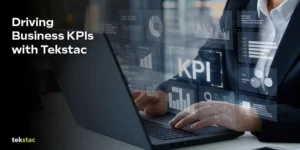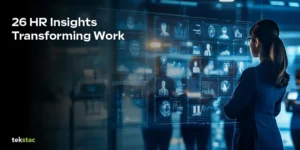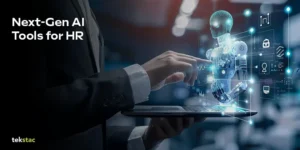Top 3 Blended Learning Benefits That Make It Perfect for Millennials and Gen Z
June 26, 2025
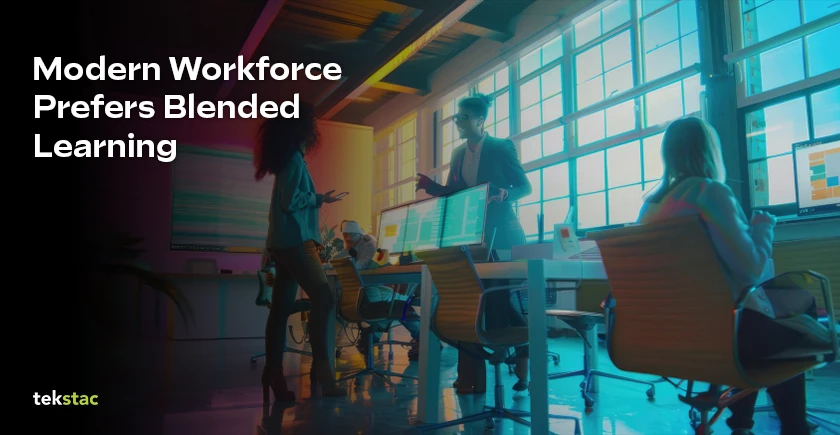
Traditional education is dead. At least, that’s what your attention span is telling you when you’re forced to sit through another three-hour lecture. Today’s learners—especially Millennial, Gen Z, and the upcoming Gen-Alpha—don’t need motivation to learn.
They need systems that respect their time and actually deliver results.
Blended learning benefits offer exactly that: an innovative fusion of digital flexibility and human interaction that matches how modern minds actually work.
Why a Custom Approach Helps Every Learner?
Blended learning is not just throwing Zoom calls at traditional classrooms and calling it innovation. Real blended learning combines digital efficiency with human insight to create learning experiences that actually stick.
- Personalized Learning Experience: Everyone learns differently, and blended learning recognizes that by adjusting the pace and style so each person can truly grasp every topic without feeling left behind.
- Hybrid Learning Approach: This method brings together the best of both worlds, letting technology handle the routine parts while face-to-face time is used for solving real problems and answering tough questions.
- Building a Lifelong Learning Mindset: Blended learning encourages curiosity and growth, making it easier to pick up new skills whenever needed and stay ready for whatever comes next in life or work.
- Immediate Feedback and Practical Use: Whether it’s a quick automated check or a teacher’s advice, feedback comes fast, so mistakes are fixed early and new skills can be put into practice right away.
- More Engagement, Less Boredom: With interactive lessons, hands-on projects, and group work, blended learning keeps everyone interested and motivated—not just memorizing facts, but actually learning to solve problems.
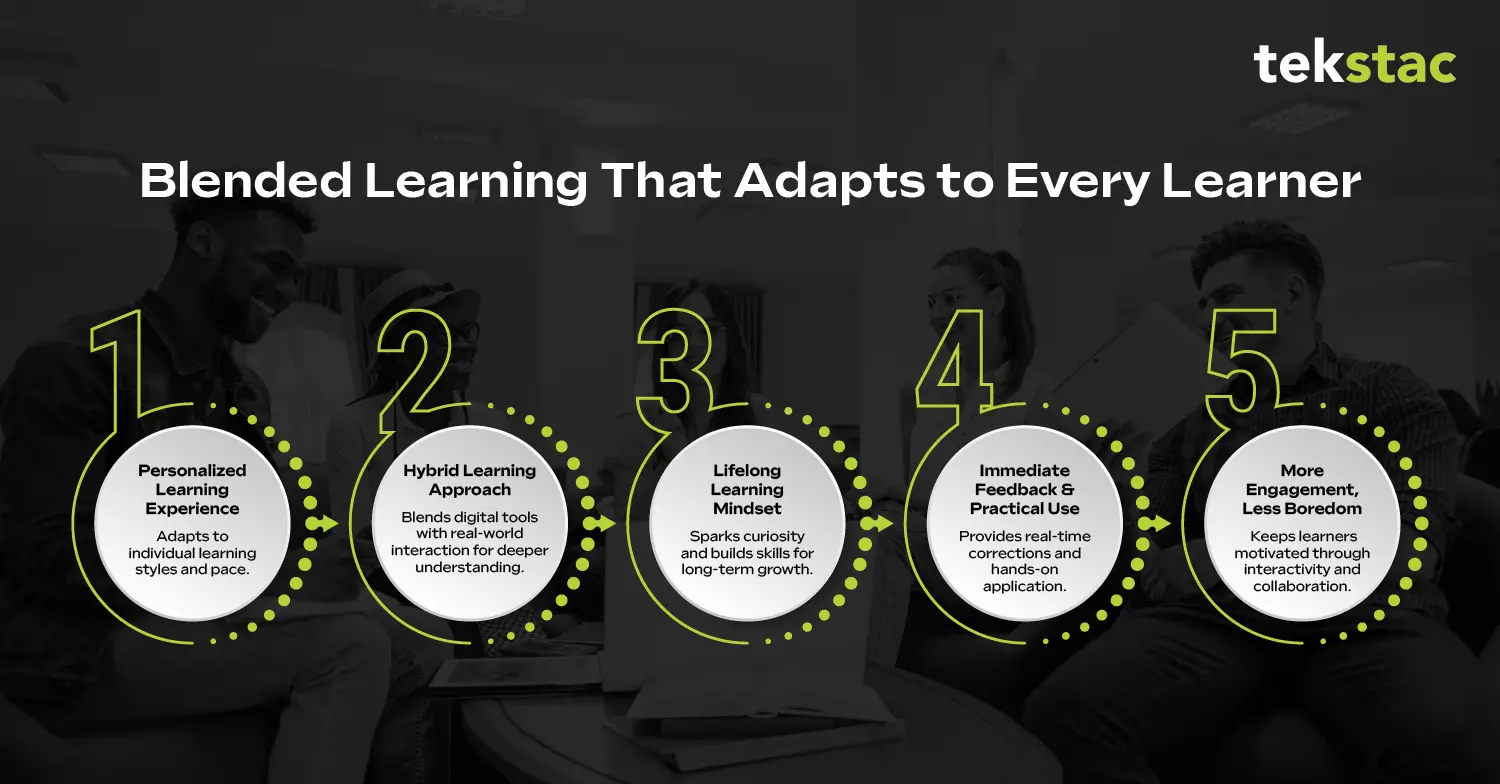
This hybrid learning approach recognizes a simple truth: not everything needs to happen in a classroom, and not everything should happen behind a screen. Recent 2025 data shows that approximately 73% of students say e-learning enables them to study at their own pace, highlighting a strong preference for formats beyond traditional one-mode teaching.
Why Traditional Learning Fails the Digital Generation
Gen Z learners don’t start with theory when solving problems. They search for the problem on Google, watch a 3-minute tutorial, try something immediately, and iterate rapidly based on results.
Traditional education punishes this natural learning behavior by forcing linear progression and treating exploration as cheating. Blended learning benefits embrace digital-native approaches through:
- Search-first solving: Learners can jump between online resources and human guidance without penalty or restriction.
- Immediate application: Concepts get tested through hands-on projects rather than being delayed until semester-end assignments.
- Rapid iteration: Mistakes become learning opportunities with instant feedback rather than delayed grade penalties.
- Community-driven solutions: Peer networks and forums supplement formal instruction with real-world problem-solving approaches.
- Non-linear progression: Advanced learners can skip ahead while others get additional support without holding back groups.
3 Key Benefits of Blended Learning Programs
- Personalized Learning Experience
- Hybrid Flexibility (Online + Offline)
- Lifelong Learning Mindset for Career Growth
1. The Power of Personalized Learning Experience
Your personalized learning experience isn’t about choosing between light and dark mode—it’s about systems that adapt to how you actually learn and perform.
Innovative blended platforms track time spent on individual challenges, common error patterns across multiple attempts, preferred learning formats, and peak performance hours when focus is strongest.
This data actively shapes your next learning session:
Adaptive Content Delivery
- Struggling concepts: Receive additional practice problems and alternative explanations tailored to your learning style.
- Advancing quickly: Skip redundant content and move to advanced concepts that challenge the current skill level.
- Visual learning: Get video explanations and interactive demonstrations before text-based theoretical material.
- Human interaction needed: Get matched with mentors who specialize in your specific challenge areas.
The system becomes your learning assistant, not your taskmaster demanding compliance with rigid schedules.
2. Hybrid Learning Approach: Best of Both Worlds
The magic happens when online and offline elements work together strategically rather than operating as separate, disconnected experiences.
Online Components Handle:
- Core concept delivery: Complex topics broken into digestible pieces that respect attention spans and busy schedules.
- Self-paced practice: Learners can repeat difficult sections without embarrassment while getting instant validation on progress.
- Progress tracking: Visual indicators of growth that motivate continued engagement rather than arbitrary completion percentages.
- Resource libraries: Reference materials, code examples, and troubleshooting guides are available during real-world application moments.
Offline Components Focus On:
- Complex problem-solving: Collaborative sessions where different perspectives illuminate solutions that individual study might miss.
- Project reviews: Human mentors provide context-specific guidance that automated systems cannot replicate effectively.
- Peer collaboration: Working with others on practical problems that mirror actual workplace scenarios.
- Career mentorship: Experienced professionals provide industry insights and strategic guidance for long-term growth planning.
3. Building a Lifelong Learning Mindset Through Blended Approaches
Lifelong learning mindset isn’t just a corporate buzzword—it’s economic survival. Skills become obsolete faster than ever, and successful learners adapt quickly to changing requirements.
Blended learning benefits support continuous growth by removing time constraints that prevent working professionals from upskilling effectively, while providing just-in-time learning when specific skills are needed for immediate projects.
Practical Implementation Strategies:
- 20-minute blocks: Start with focused learning sessions that fit into busy schedules without overwhelming daily responsibilities.
- Project-based outcomes: Focus on tangible results that demonstrate competency rather than participation trophies with questionable market value.
- Join cohorts: Community support that provides accountability and shared struggle during difficult learning phases.
- Apply skills immediately: Reinforce learning through practical application rather than waiting for perfect conditions or permission.
- Document progress: Create evidence of growth that builds confidence and demonstrates capability to potential employers.
The Neuroscience Behind Why Blended Learning Works
Your brain doesn’t learn in straight lines. Research from the Journal of Educational Psychology shows that varied learning contexts improve retention by up to 40% compared to single-format instruction.
Blended learning benefits align with natural information processing through spaced repetition, where online modules reinforce concepts over time while offline sessions provide different contexts for the same skills, creating emotional connections to abstract ideas.
Active recall replaces passive consumption:
- Problem-solving focus: Engagement with challenging tasks that require thinking rather than passive information consumption.
- Peer discussions: Teaching others in your own words solidifies understanding and reveals knowledge gaps.
- Immediate application: Real-world usage exposes the difference between recognition and proper comprehension.
Real-World Success Metrics That Matter
Forget completion rates and quiz scores. Blended learning benefits show up in metrics that actually impact careers and personal growth.
Portfolio development with tangible projects demonstrates competency more effectively than certificates, while skill application in current roles within 30 days proves learning transfer to practical situations.
Learning Efficiency Measures:
- Time to competency: Faster skill acquisition through focused, practical learning approaches rather than theoretical foundation building.
- Retention rates: Skills that stick because they were learned through application rather than memorization.
- Problem-solving speed: Ability to apply knowledge quickly when faced with actual challenges rather than artificial test conditions.
- Transfer ability: Flexible thinking that adapts learned concepts to new situations and unexpected problems.
Ready to Experience Real Learning Transformation?
The era of sitting through boring lectures and hoping for the best is over. Blended learning benefits offer a clear path to skills that actually matter, delivered in ways that respect your time and intelligence.
Your competition isn’t just learning the same skills you are. They’re learning how to understand better, faster, and more effectively than traditional methods allow.
Stop wondering if there’s a better way to learn. Start experiencing the transformation that happens when technology and human insight work together seamlessly.
Discover how our blended learning approach can accelerate your skill development—request a demo today.

